Autonomous Vehicles Will Be Here Later Than Promised, Better Than You Thought
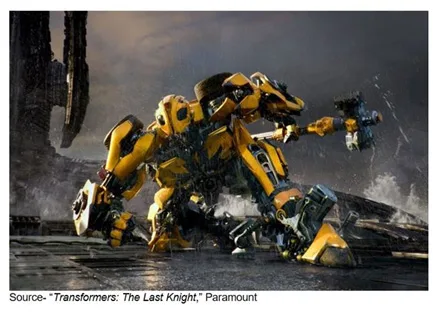
Three sessions at the recent Flash Memory Summit (FMS) made it apparent that like it or not, the driverless car is coming.They won’t arrive as quickly as some analysts predict; but they will change everything.
But first, they’ll require advances in processor, sensor, storage technologies, artificial intelligence, cloud/edge computing, telecommunications.

According to Strategy Analytics, it could easily be a $7T market by 2050; but it won’t be a smooth trip.
People will have to change their opinions from being a measure of success, freedom and independence to simply being transportation.
The autonomous road won’t be without its accidents and fatalities because infallible technology will fail.
For a lot of people, the idea of trusting your life to a computer hurtling you down the road sounds foolhardy.
The whole idea behind the autonomous vehicle is to eliminate human error and deliver zero street/road fatalities – awesome, but impossible.
Every incident can produce system and AI (artificial intelligence) improvements so they happen less frequently rather than 10s of thousands of people making the same mistake with the same outcome … injury or death.
In other words, it sure beats status quo.
Last year, auto accidents killed more than 40,000 folks in the U.S. and more than 1.2 million people worldwide.
As a result, most countries have carried out aggressive efforts to reduce vehicle crashes. And combined with safer vehicles, traffic deaths have been reduced.
Back in 1990, the U.S. fatality rate was about 10 percent lower than in Canada and Australia. Today, we’re 40 percent higher.
Once Slovenia – between Austria and Croatia – had a 5x higher death rate than the U.S.
Today? Safer.
In fact, the U.S. has the dubious honor of having the most dangerous roads in the industrial world.
No wonder the younger generation is less interested in getting a driver’s license and more interested in driverless cars than your dad/mom …or you!
The Society of Automotive Engineers (SAE) has defined six levels of AVs (autonomous vehicles) which require less driver involvement.
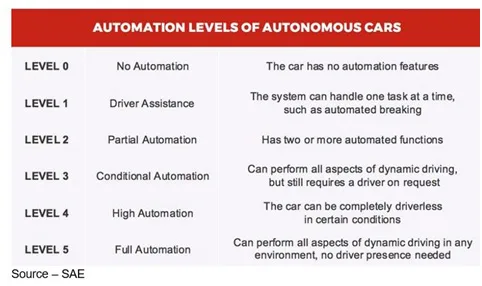
Each level has a lot of hurdles that must be overcome – technical, cost, legislative, liability, public acceptance.
That takes time and money.
The majority of AVs in daily use today are Level 2 self-driving cars – they keep you in your lane of the highway, maintain the proper speed limit/car distance and respond when the vehicle ahead slows down/resumes speed when they accelerate.
As they move up the food chain, some AVs will change lanes for you if requested and prohibit the change when it isn’t safe.
While more autonomy is promised in next couple of years, it’s going to take time and a whole lot of consumer education.
Take the dude in England early this year who thought it would be cool to put his Tesla on autopilot.
He slipped into the passenger seat and let the electric car whiz along at 40mph.
Yeah, he lost his license for 18 months!
One of the best features normal folks are looking for is the introduction of sophisticated crash-avoidance systems – computers, cameras, radar, lidar, sensors, the works.
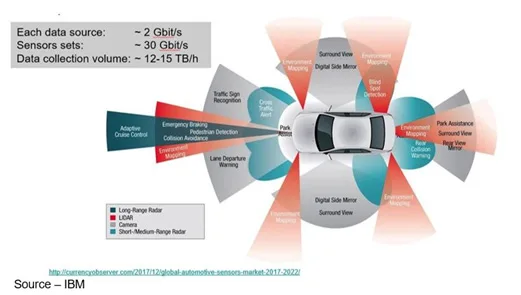
All those systems will be sucking in data from every corner of the car … including checking to see if you’re awake, having a snack, sending/reading text, picking your nose–everything.
No wonder the flash folks sat up and listened when Greg Basich, senior analyst of global automotive practice at Strategy Analytics, gave his opening comments during the first auto session at FMS.
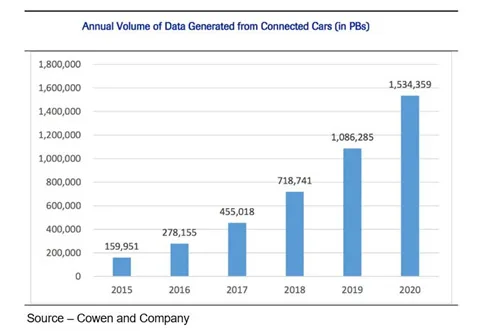
All that data had to be kept somewhere, and the best way to store it – even for a nanosecond – was on some type of flash media.
Of course, the NAND folks knew the best storage for all the auto data was on their technology. NOR folks said; nope, it was theirs. RAM folks put in their bid. SSD folks scoffed and said they would rise to the top.

But it was Ivan Ivanov, of the Connected Car Division, at HARMAN Becker Automotive Systems GmbH, who made them sit up and take notice as to what auto and tier 1 manufacturers expected from the flash storage folks.
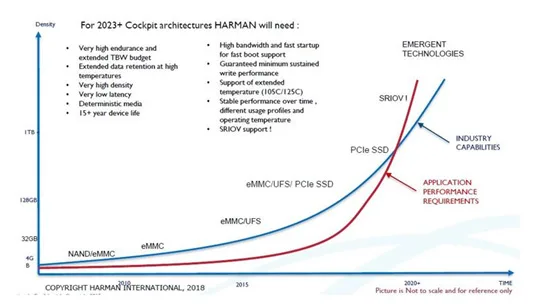
Harman is one of the leaders in providing systems and solutions to the AV folks and Ivanov didn’t hold back.
He told the edge-of-their-seat audience that PC and mobile storage architecture advances are past their prime and that automotive is beginning to become increasingly important.
By 2024, which is the design period his team is focusing on right now, will be of major importance to the storage industry.
His message was clear, “Pay attention, be ready or be left behind!”
The transparency of his message was so subtle!
He and several other auto session panelists like Eric Stouffer and Clod Barrera, of IBM; Crystal Chang, of ATP Electronics; and Alan Messer, of InnovationShift; agreed that the truly autonomous car wouldn’t be widely on the road until 2030.

There wasn’t enough time to thoroughly explore the subject, but ATP’s Chang asked the audience a provocative question – “Who comes first, the autonomous car or the hacker?”
As Kun Zhou, of the UC Berkeley PATH (Partners for Advanced Transportation Technology) program, noted, there are more than 30 programs around the state exploring the ecosystem requirements to safely move vehicles, bike riders, passengers, products and commerce around the streets and highways.
The PATH program has been in place in California for nearly 30 years–trying to figure out how to move things around quickly, safely and eliminate the state’s miles of parking lots.
Personally, we hope their teams can get it done sooner rather than later.
Zhou opened his discussion of PATH’s activities by asking, “What can infrastructure structure providers do to better support the autonomous car?”
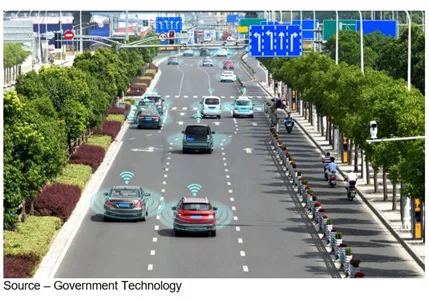
Rather than being bound up in bureaucracy, national, state and local teams like PATH understand that safely and securely capturing and making available the right data, at the right time, at the right place is key to making the complete ecosystem move smoothly.
Fast, reliable, economic flash storage can play a key role in delivering the information.
InnovationShift’s Messer said the market is much more complex than the five SAE levels and that each has its limitations.
“Each of those limitations create different markets with different usages/complexities,” he noted. “and each will have different storage requirements.
“The mass market will be slow to arrive,” Messer emphasized. “Vehicle processes require three plus years and most of the early AVs are modified cars/trucks.
“The challenge,” he added, “is that OEMs have a limited view of AVs, focusing only on the car/sensors/storage, not the end-to-end system. Some people assert that 5G will tie everything together but it’s no silver bullet because it won’t be uniformly available around the globe and constant connectivity can’t be guaranteed.”
Maybe not, but the M&E industry is already working on ideas to fill your empty hours in traffic that will be discussed at IBC next month and SMPTE in October.
What would be better than making your AV an in-drive theater?

No, that wasn’t a typo.
Yes, both M&E events are having keynotes, sessions and displays on how to monetize content on tomorrow’s moving screens.
Makes sense.
Instead of sitting on LA’s 405, the Bay Area’s 101 or your favorite congested highway, cutting in/out, blasting the horn and ticking everyone off; you can sit and enjoy a first run flick or two TV shows, complete with customized ads.
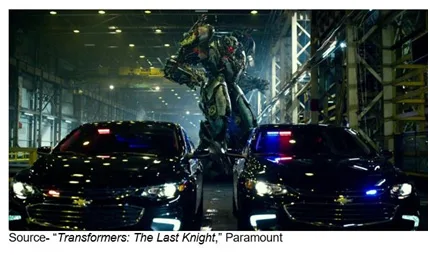 Right now, we’re getting self-driving with asterisks.
Right now, we’re getting self-driving with asterisks.
In a couple of years, we’ll get AVs with really good front-/rear-end collision avoidance.
But after that, you’ll be able to understand Sir Edmund Burton’s observation, “Ah, I do so love perfect timing!”
# # #